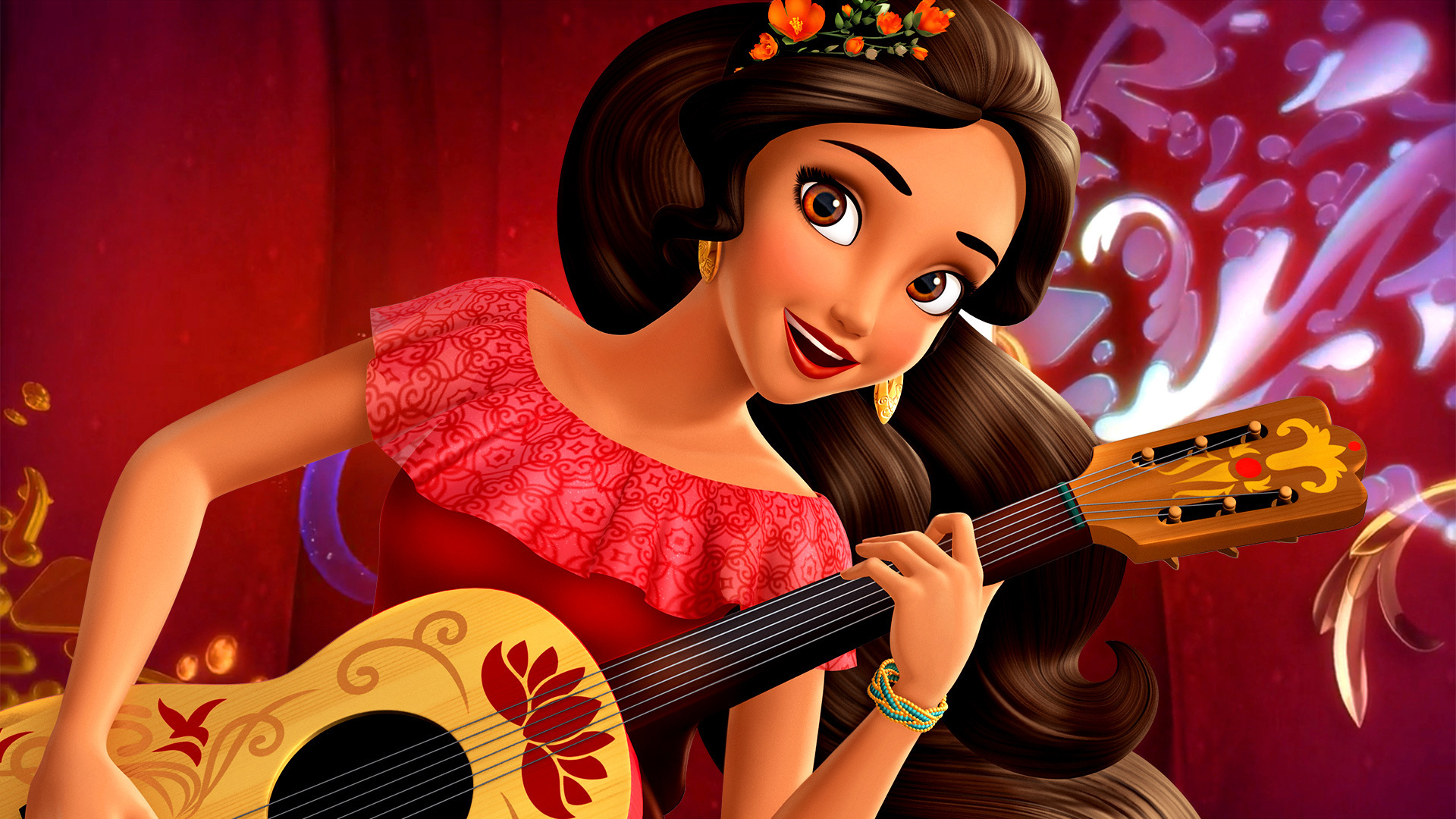As a kid, I was obsessed with Snow White. Old pictures show five-year-old me eternally decorated in too-expensive costumes from the Disney store. Obsessions like this aren’t uncommon for little kids, especially my six-year-old sister. She can compose whole outfits down to her socks and shoes from “Elena of Avalor” merchandise for a week. The main difference between then and now, especially as part of a Latino family, is that my sister has a favorite character who looks like her.
Since the dawn of “Snow White and the Seven Dwarfs” in 1937, Disney’s reigning line-up has been under fire. The reasons are endless; the princesses are labeled as damsels in distress, anti-feminist, racist caricatures or, in the case of “Pocahontas,” endorsing rhetoric propping up white colonialism and supremacy. These claims have merit and deserve serious consideration when contemplating the effect positive portrayal of negative attributes they may have on younger children.
On the other hand, many (adult) fans look to the royals with a new lens, claiming that the princesses have been feminist the whole time. For example, an article from Cracked asks audiences to view the regal icons not as princesses or products of their time, but as protagonists. Whether you agree with that line of thinking or not, it’s interesting to consider how newer schools of thought have affected Disney’s recent content in terms of both gender and race.
The Disney Renaissance began in 1989 with “The Little Mermaid” and “Aladdin.” It is during this era that racially and ethnically diverse characters began featuring in Disney’s major motion pictures. Loosely based on “One Thousand and One Nights,” “Aladdin” introduces Disney’s first non-white princess, Jasmine. Everyone knows the tale of the tiger-wielding princess and a street rat conning his way to royalty with the help of a wayward genie. However, at the time of its release, the film was widely praised but heavily criticized for playing into racial and ethnic stereotypes. Other ventures into the great wide world of diversity, such as “Mulan,” “Pocahontas” and “The Princess and the Frog” received similar reviews. So where does this leave Elena?
“Elena of Avalor” began airing in July 2016 on Disney Jr., marketed specifically to children. Elena Castillo Flores is a sixteen-year-old princess charged with ruling a country that’s been cursed for forty-one years—during which she was trapped in an amulet, and her family in a painting. Elena is freed by Sofia the First, another princess with her own self-titled program, and the pair teams up to defeat the evil sorceress responsible for all the destruction and strife in Avalor. The show begins with Elena learning the ropes with the guidance of her cousin, Esteban, and her grandparents.
Elena is different from Disney princesses for two major reasons: She does not have a major motion picture and unlike her predecessors, thanks to the television format, audiences get to see her actually rule over her country. This may contribute to why she is technically not an “official” Disney princess. A spot on the line-up is coveted and rare, with “Brave” protagonist Merida coronated as a newly-minted despot in 2013.
Elena of Avalor is billed as the first (non-white) Latina Disney princess, and the style of the show certainly shows it. The theme song boasts mariachi and salsa influences, in addition to many other genres of Latin music. Principle characters such as Elena’s family members and friends speak with accents, and Latin American holidays, traditions and festivities are regularly celebrated within the show. The Avalor castle mirrors Mexican and Caribbean architecture. Elena’s staple outfit bears a strong resemblance to dresses worn by flamenco dancers, which is a popular Spanish style of dance.
Craig Gerber, the show’s creator and executive producer, said in an interview “It was very important to us that, since we were doing a show with a kingdom inspired by Latin American culture, that we get that right.” The majority of the voice actors are Latino themselves; Aimee Carrero, the voice of Elena, is from the Dominican Republic. In addition to this, cultural consultants were brought onto the show to ensure that “Elena of Avalor” did its best to represent Latino viewers. The efforts have clearly been appreciated—the show is slated for five seasons and already aired a TV movie.
As with any journey into new territory, “Elena of Avalor” is no stranger to criticism. Particularly, reviewers disliked Disney’s decision to focus on the broad umbrella of Latino cultures rather than anchoring itself in a specific one. Latin America is large and filled with sundry assortments of people and countries. Other Disney properties featuring diverse characters usually had a cultural focus; “The Emperor’s New Groove” roots itself in the Inca civilization. Detractors of the show highlighted that Elena still has an American accent despite members of her family sporting (locationally neutral) Latin accents, supporting the notion that sounding “American” is the key to success.
Debate surrounding “Elena of Avalor” has expanded to questioning whether a Latin American “inspired” show is truly the same as taking place in a Latin American country. Ultimately, what value is placed on representing minorities in media is hard to determine when there is so little of it. One can only hope that this will change in the future.
“Elena of Avalor” is not a perfect show by any means. The core of the show, however, is the strength of Elena’s character. She is strong, independent and fallible. As expected of a young monarch, Elena makes mistakes and doesn’t always listen to the advice she’s given. By the end of an episode, in true kid’s show fashion, Elena learns from her errors and emerges as a better person and ruler. For me, there’s not much that can beat the look on my sister’s face when she met Elena for the first time on a trip to Magic Kingdom. If Elena of Avalor wants to be a role model for little kids and maybe even adults, I’m happy to let her.

















